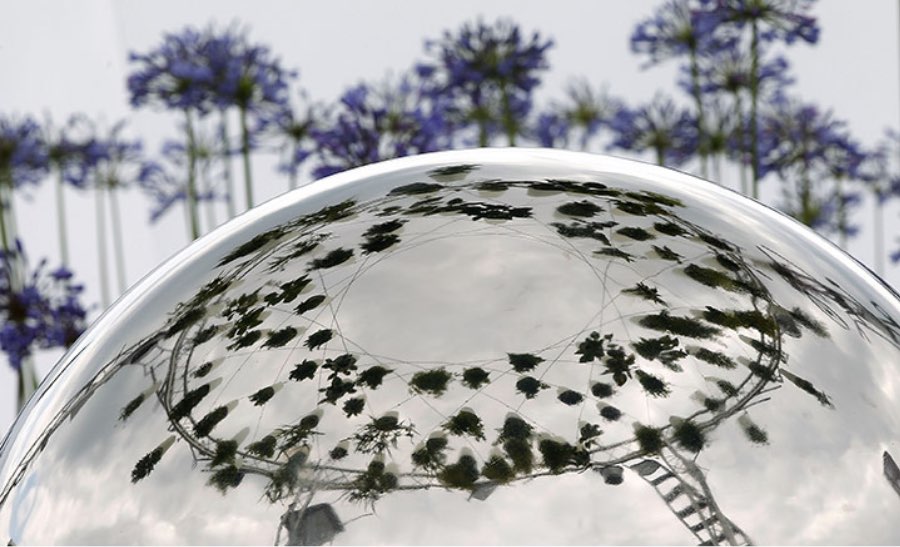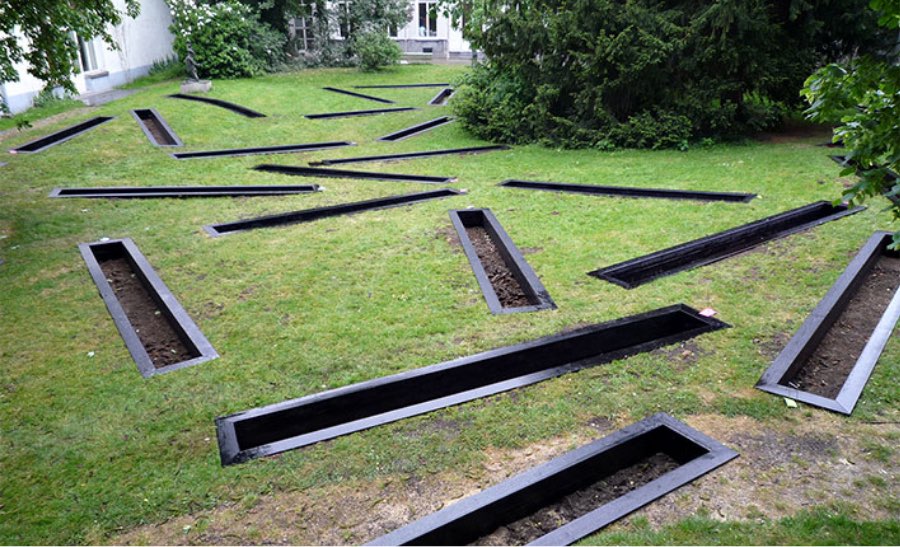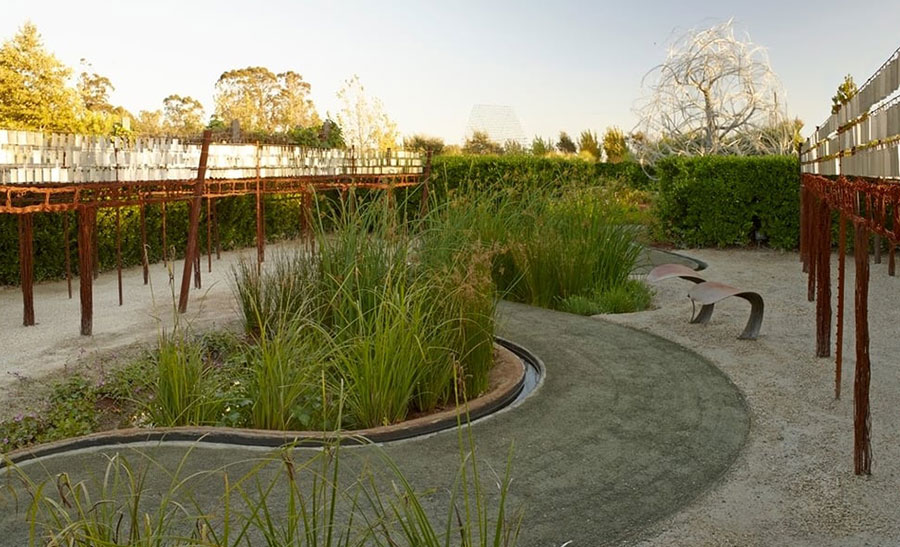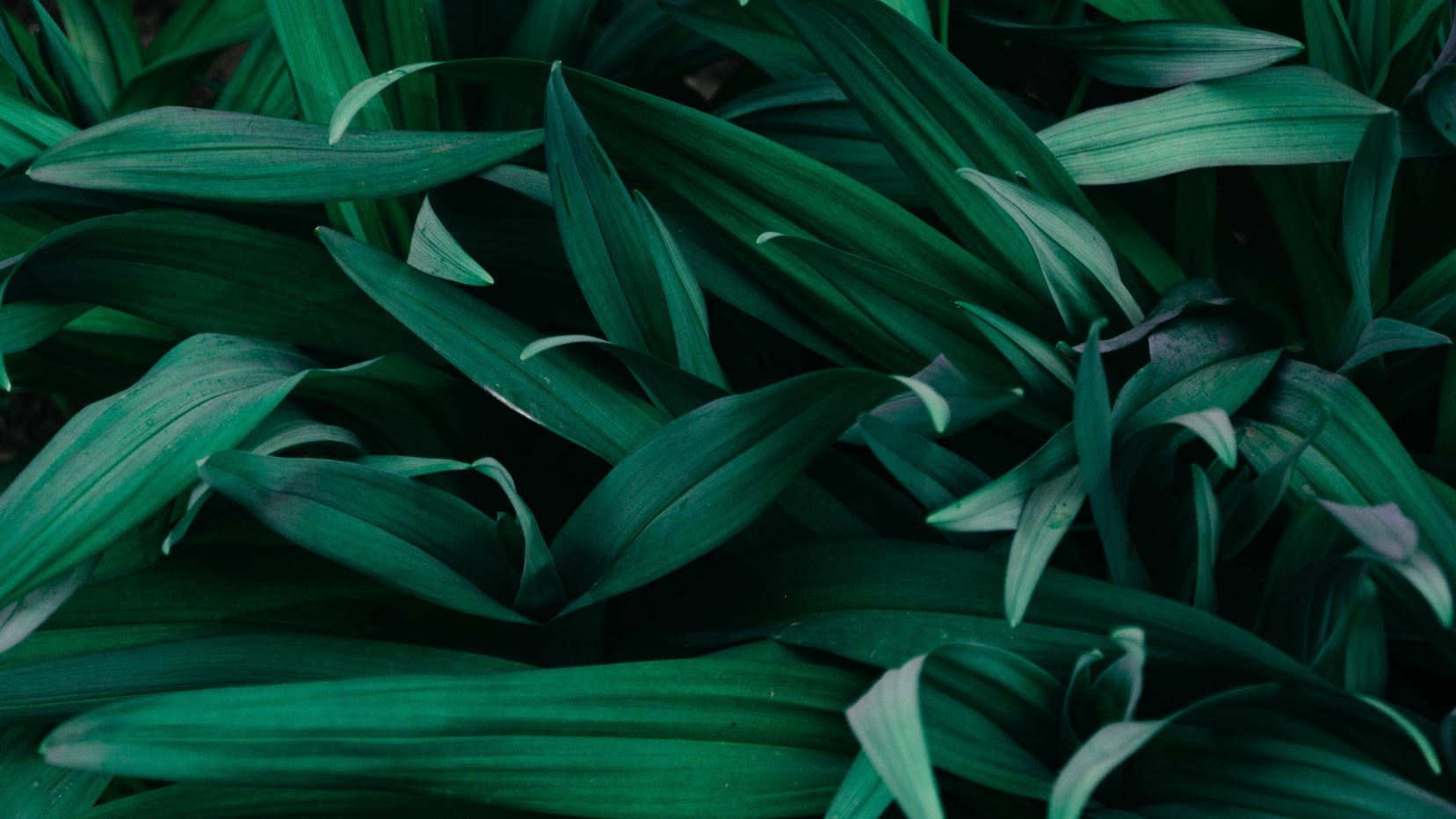Summer is on the horizon and some of us understandably look forward to spending more time outdoors, thinking of places to visit for the holidays. If you enjoy parks and gardens but are thinking to do something different this year, consider conceptual gardens.
While gardening has always been a form of art, conceptual garden happens when you merge gardening with art installations. A conceptual garden is exhibited with a narrative to a specific theme or message, just like a typical art installation. Here are two leading figures and their works to give you a glimpse of what conceptual gardening is about.
 Image source: www.theguardian.com
Image source: www.theguardian.com
Martha Schwartz
Martha Schwartz is a landscape architect and leading garden conceptualist with over 32 years of experience designing and implementing installations, gardens, civic plazas, parks, and a variety of other urban spaces.
In 1979 she created what perhaps was the first-ever conceptual garden called The Bagel Garden, to question the lack of artistry in her profession. Schwartz firmly believes that sustainability is linked to how our environmental looks – that something attractive will have more longevity. She also believes that a built landscape is not required to look like or mimic nature. The idea or inspiration to create attractive spaces, or in this case, gardens, can come from anything.
For the 2009 Secret Gardens Festival in Belgium, Schwartz collaborated with BAM (Fine Arts Mons) to create the Garden Game – an experiment in creating a garden remotely with instructions sent via email and participants played the game in the backyard of Broelmuseum in Kortrijk. Basically, a rolling dice is used to generate “a chaotic maze of tectonic hedge walls”. Besides a dice, dancers from La Passarelle Dance Studio used a hand-made dial, string and stakes to locate a total of 35 planting beds, which were then planted by gardeners from Tuinarchitectuur-Tuinaanleg. The game was recorded and the video, titled “The Chaotic Rise and Fall of the White Masked Man and Other Common Acts” is exhibited as an installation at the Broel Museum, showing the garden as a stage for living.
 Image source: www.marthaschwartz.com
Image source: www.marthaschwartz.com
Suzanne Biaggi
As an ecological designer, Suzanne Biaggi’s design studio has received multiple awards of excellence from the San Francisco Landscape Garden Show. In her work Biaggi looks at relationship between opposing forces – their effect on each other and the point where boundaries blur. With stone and water she looks at how the seemingly yielding forces of water create and shape stone, where liquid and solid merge. She also considers how man and nature collaborate to create a space. Influenced by her travels to Japan, the ancient stone worship sites of Mooria and Italian Mannerist gardens, Biaggi’s work is contemplative and harmonious.
Designed for Cornerstone Gardens in Sonoma in 2013, the “Ecology of Place” explores the site’s ecology and sustainability. It merges past, present and future of the locale. The past was represented by recreated wetlands, oyster shell mulch and a runnel to signify flowing water from San Pablo Bay. Sculptural vineyards with aluminium leaves represent the present, while a sculptural tree created by New Zealander Regan Gentry, restored native plants and wetlands symbolize future possibilities.
 Image source: sbiaggi.com, yelp.com
Image source: sbiaggi.com, yelp.com
Garden visitors are treated to a multi-sensory experience: light and sound patterns are created as the wind blows through the aluminium “leaves” of the vineyards. As one follows the meandering pathway, representations of the past, present and future evoke memory, encourage discovery and contemplation of our role in the site’s ecology.
Impact of design on sustainability seems to be a common thread connecting the works of both Schwartz and Biaggi above. However a conceptual garden can be inspired by just about anything: a piece of local history or cultural heritage, current trend, or simply something close at heart to the artist(s). Anoushka Feiler, designer of “Excuse Me, While I Kiss The Sky”, thinks conceptual gardens “give designers the chance to create something that is less restricted … the opportunity to push the boundaries and make statements that entertain and / or make you think or see things in new ways.”
As Schwartz said: “All great art is, essentially, a very personal statement or inquiry.” Whatever the narrative, a conceptual garden has a voice and a message to deliver.




